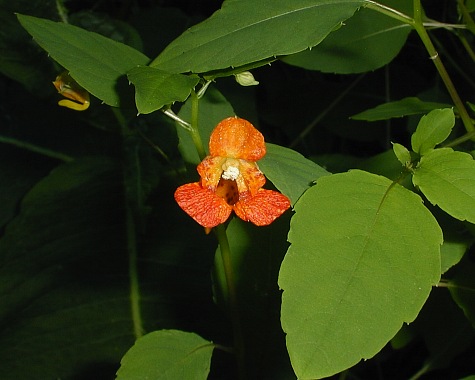Five Common Weeds That Can Actually Be Medicine
The things we do for the perfect lawn.
We spray, pull, chop--all in an effort to rid ourselves of those pesky invaders we call weeds.
They grow too tall, spread too far, grow too abundantly, and are just a bit too ugly and unsightly.
We have been taught that anything that doesn't fit into a perfectly manicured lawn is therefore a weed and it must be irradicated.
But in all honesty, weeds are generally some of the most abundant (or in other terms invasive) and difficult to kill plants.
Unfortunately, the term "weed" includes hundreds of both beneficial and non-beneficial plants.
The most beneficial of these plants actually have a proven track record to help with fevers, indigestion, wound healing, internal body system regulation, and so much more.
They don't always have the most beautiful flowers and tend to grow where you don't want them but the benefits they impart is more than worth the inconvenience in most cases.
So here are five of those so-called "weeds" (in no particular order) that actually have tremendous benefits for us.
Keep in mind this is for informational purposes only and does not constitute medical advice. I am not a doctor or healthcare professional. Always seek the advice of a medical professional in the diagnosing of illness or disease or the prescribing of medication or health supplements. Always do your own research.
1. Dandelion

Dandelion root is sometimes dried and ground into a coffee like substance. The leaves can be eaten in salads or cooked like greens. The flowers can be dried and infused into oils--then applied to dry skin or massaged onto achy muscles.
If you choose to wild-harvest your dandelions, be sure to select areas that you know are not treated with pesticides. Be aware of allergies as dandelions do contain latex.
References:
Hill, Ansley. "13 Potential Health Benefits of Dandelion". Healthline
"Taraxacum". Wikipedia
Lapcevic, Mathie. "Making and Using Dandelion Oil". Homespun Seasonal Living
2. Orange Jewelweed

This plant is mostly found around ponds and water features. It is used very commonly in the treatment of contact irritation from poison ivy, poison oak, and the like. Jewelweed can be prepared three ways.
1. You can simply crush the knobby stems between your fingers and rub the juices directly onto your skin--if the plants are in season.
2. You can harvest the stems, wash, and boil them for a liquid to be used in soap or lotion-making.
3. The stems can also be dried and steeped in oil for 6 weeks. This infused oil can then be used to make balms or oils.
This plant is easiest to identify by its bright orange flowers in the summer.
References:
"Impatiens capensis". Wikipedia
Karriker, Kent. "Plant of the Week: Jewelweed (Impatiens capensis)". U.S. Forest Service
"Orange Jewelweed". Illinois Wildflowers
3. Plantago, or Plantain

Not to be confused with the banana-like cooking plantain. This small plant comes in both broad- and narrow-leaf varieties. It is very prevalent in open fields, parks, and the side of roadways. This plant has "astringent, anti-toxic, antimicrobial, anti-inflammatory, anti-histamine, antidiarrhoeal as well as demulcent [relieves inflammation], expectorant [loosens mucus], styptic [stops bleeding], diuretic [expels]" and even more amazing properties.
Plantago can be used internally for cough and mucus as teas and tinctures. Used externally it can be applied as a poultice for rashes, bug bites, and minor sores. This plant can even be used as salad greens. The Wikipedia article explained that young leaves can be eaten raw, older leaves can be cooked, and seeds can be cooked and eaten like rice--AMAZING!
References:
"Plantago". Wikipedia
4. Mullein

Considered a "non-native invasive species" common mullein is still heralded for its practical applications and numerous health benefits. This biennial plant is a short, stocky rosette of leaves its first year then shoots up to a nearly six-foot flowering stalk its second year. The leaves when in season are known as "cowboy toilet paper" due to being large, soft, and fuzzy in nature. The leaves are usually dried and made into a tea for lung conditions like asthma. The flowers are infused into oil for relieving ear aches.
References:
"Verbascum". Wikipedia
"Verbascum thapsus". Wikipedia
5. Stinging Nettle

A perrenial plant used to ease symptoms of arthritis. The stinging hairs on the plants stems and leaves are deactivated when the plant is cooked or dried and ground.
This powerhouse plant packs a dense amount of nutrients including "vitamins A, C and K, as well as several B vitamins; and minerals like calcium, iron, magnesium, phosphorus, potassium and sodium".
References:
"Urtica dioica". Wikipedia
Raman, Ryan. "6 Evidence-Based Benefits of Stinging Nettle". Healthline
In Conclusion
There are so many more of these, medicinal and beneficial plants. See if these plants are something you want to add to your herbal medicine cabinet.
In the comments below, share a so called "weed" that is beneficial--I'd love to read your answers.
Shalawam!
